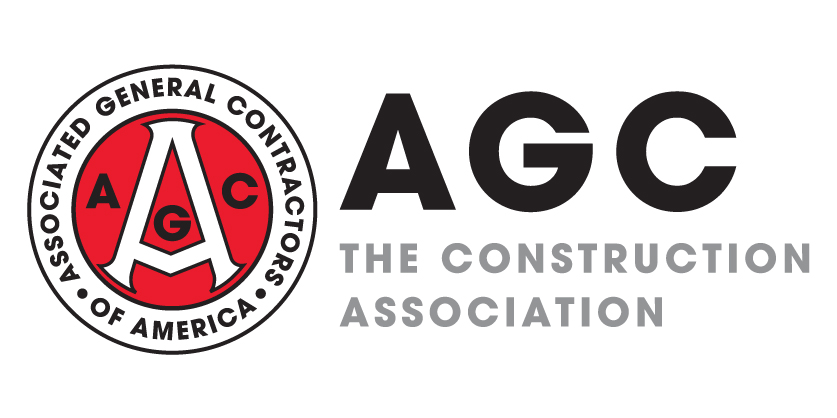
Construction firms reported diverging views over the past month about when business will “return to its normal level of operations relative to one year ago,” based on results from Census’s latest weekly Small Business Pulse Survey, released on Thursday with responses from October 4 to 12. The share of firms that expect returning to normal will take more than six months edged up to 33.6% from 32.0% in the September 6-12 survey. At the same time, the share that reported the business had already returned to year-ago levels climbed to 16.9% from 14.3%. A slight majority (52.9%) reported no supply difficulties or delays, compared to 39.8% who reported domestic supplier delays and 16.4% who reported difficulty locating alternate domestic supplies. Contractor readers are invited to complete AGC’s latest coronavirus survey, which will close at midday on Monday, October 19, with results to be reported the following week.
Construction costs moved up sharply in September, while bid prices dipped, as indicated by producer price indexes (PPIs) that the Bureau of Labor Statistics (BLS) posted on Wednesday. AGC posted tables showing PPIs relevant to construction. The PPI for new nonresidential building construction—a measure of the price that contractors say they would charge to build a fixed set of buildings—edged down 0.2% for the month, not seasonally adjusted. The year-over-year (y/y) gain of 1.7% was the smallest in more than three years. Changes ranged from -0.2% y/y for new warehouses to 1.5% for offices, 1.8% for schools and healthcare buildings, and 2.7% for industrial buildings. Increases in PPIs for subcontractors’ new, repair and maintenance work on nonresidential buildings ranged from 0.4% y/y for plumbing and concrete contractors to 1.9% for electrical contractors and 3.2% for roofing contractors. The PPI for inputs to construction—a measure of both goods (55%) and services (45%) used in every type of construction—increased 2.5% from August to September and 3.8% y/y. The increase was driven in part by the PPI for lumber and plywood, which jumped 19% in September and 49% y/y, the most in the 53-year history of that index. The PPI for aluminum mill shapes also took a large jump in September, 6.8%, but declined 3.1% y/y. Other items important to construction with large 1- or 12-month changes include: copper and brass mill shapes, up 3.0% for the month and 11% y/y; steel mill products, -0.1% and -10%, respectively; and diesel fuel, -2.7% and -14%. BLS announced on September 25 that it has begun producing an experimental set of “satellite inputs to industry price” indexes. These indexes combine prices from domestic producers (the only prices used to calculate PPIs) with import prices. The series can be quite different. For instance, the PPI for domestically produced goods inputs to new construction decreased 0.8% from August 2019 to August 2020, while the index for imported goods inputs increased 2.6%.
Two reports on construction starts (dollars) in September were equally bleak. Total starts plunged 18% in September at a seasonally adjusted annual rate, reversing August’s gain and bringing starts below levels seen in June and July, Dodge Data & Analytics reported on Thursday. All three major categories of starts declined for the month: nonresidential, -24%; residential building, -21%; and nonbuilding, -5%. “Year-to-date through nine months, total construction starts were down 14% from the same period in 2019….Nonbuilding starts were down 18%” (highways and bridges, up 2%; environmental public works, down 10%; utility/gas plants, -43%). Year-to-date nonresidential building starts were down 26% (commercial, -27%; institutional, -18%; manufacturing, -56%). Year-to-date residential starts were up 1% (single-family, up 6%, and multifamily, down 12%).
Construction starts (dollars) in September plummeted 30% y/y and 20% year-to-date, data firm ConstructConnect reported on October 13. Nonresidential building starts tumbled 41% y/y and 34% year-to-date (institutional, -36% and -16%, respectively; commercial, -53% and -34%; industrial [manufacturing], 53% and -74%). Engineering (civil) starts sank 38% y/y and 16% year-to-date. Residential starts fell 16% y/y and 6.0% year-to-date (apartment, -62% and -25%; single family, up 9.7% and 2.8 %).
In an ominous indication of where demand and funding for higher-education construction may be headed, “undergraduate enrollment is now running 4% below last year’s level, and the upward trend for graduate enrollment has slipped to 2.7%,” the National Student Clearinghouse Research Center reported on Thursday. “As a result, overall postsecondary enrollment is down 3% compared to the same time last year….‘Most strikingly, freshman students are by far the biggest decline of any group from last year, with a decrease of 16.1% nationally and a 22.7% drop at community colleges in particular,’” said Executive Director Doug Shapiro.
In a possible indication of where multifamily construction will do best, the Wall Street Journal reported on Wednesday, “Apartment rents are rising in suburban markets across the U.S. as city dwellers look for bigger spaces in smaller towns….Apartment rents in the suburban markets of Sacramento, Norfolk, Va., and the Inland Empire of southern California rose 3.2% to 4.6% at the end of the third quarter compared with March, according to data firm CoStar Group Inc….Meanwhile, rents in central business districts in popular cities have been tumbling. San Francisco, where these rents are down 17% since the March peak, has been hardest hit, CoStar said. These district rents are down 9.2% in Boston and between 5% and 6% in New York, Los Angeles and Philadelphia. Overall, central business district rents are falling about 1% a month, CoStar said. [Suburban demand] for apartments that target the middle class…has increased…but there has been little new supply because most recent development has focused on higher-end units and urban markets.”




